The Federal Aviation Administration (FAA) is taking the next step in replacing 31 aging air traffic control towers at small airports.
It now seeks comments on a draft environmental assessment for newly-designed, more sustainable facilities.
In April, the agency selected the Practice for Architecture and Urbanism (PAU) for a new sustainable air-traffic control tower prototype.
The towers range in height from 20 meters to 40 meters (or 60 feet to 119 feet) and incorporate elements such as all-electric building systems, materials that are free from chemicals known to pose health risks, a thermally efficient facade, high-recycled steel and metal products, renewable mass timber, and ground-source heating and cooling in some environments, the agency said.
Initial towers slated for replacement are functioning beyond their intended design life and are located throughout the country, from Key West, Florida, to Bellingham, Washington, the FAA said.
The projects, funded partly through the Biden Administration’s Bipartisan Infrastructure Law, were selected against the agency’s strict requirements to minimise environmental impact while reducing operational costs and the construction price.
The design incorporates several key sustainability elements, including:
- Renewable mass timber, when usable
- All-electric building systems
- Materials and products free from chemicals known to pose health risks
- Thermally efficient façade
- High-recycled steel and metal products
- Ground-source heating and cooling in some environments
“These new air traffic control towers will mean that smaller airports can handle more flights, more sustainably and more affordably,” said U.S. Transportation Secretary Pete Buttigieg.
“I look forward to seeing this design go from the drawing board to construction sites across the country, helping our nation’s airports support more travelers, grow their local economies, and prepare for the future of low-carbon aviation.”
A required step in the replacement process, the draft assessment details the conditions and potential environmental impacts of the replacements, including the construction and operation of the proposed towers, along with the decommissioning and removal of the existing towers.
The FAA will accept comments on the environmental assessment through July 31.
Mass Timber Adoption in North American Airports
On Friday, Wood Central reported on the Portland International Airport – where a 390,000 square feet roof, made from 3.3 million square feet of native Douglas Fir, is being constructed over ‘America’s favourite airport.’
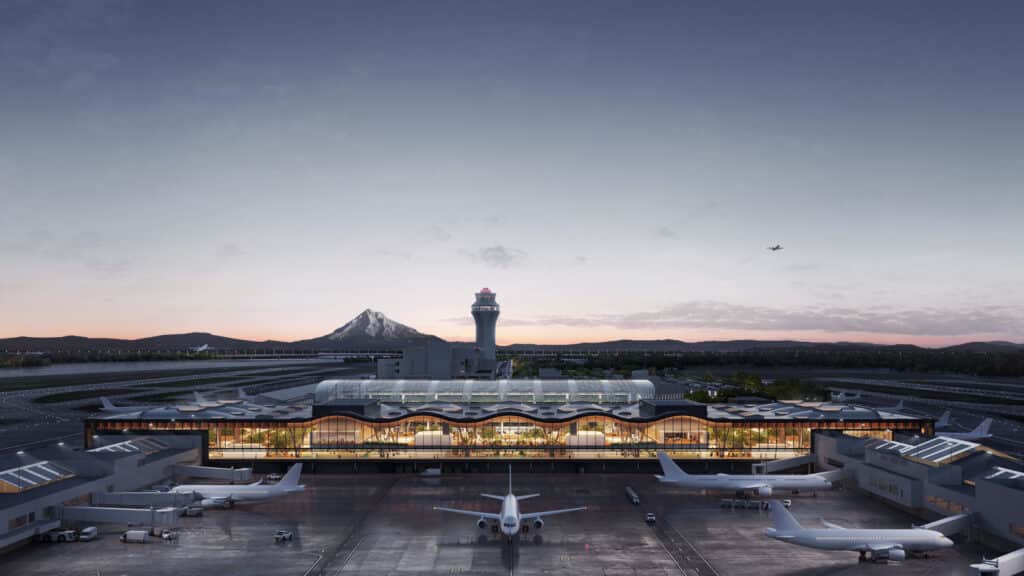
The massive roof, which uses nearly 400 glulam beams, is 392,000 square feet in size – with 250 of the glulam beams 80 feet long – paired with 40,000 lattice pieces atop 34 Y columns.
Wood Central reports that the massive glulam roof is now being installed in panels over the Airport.
Mammoet was jacking up, transporting, and installing twenty roof panels of five distinct types at the Airport – all while avoiding passenger disruption.
Mass timber is increasingly being adopted by airport operators as a lighter, more cost-efficient alternative to steel, concrete, and glass.
Covered by Dezeen, Kansas City Airport features a large wood-clad canopy. The 100,000 square meters (1.1 million square feet) building replaces the original, overcrowded terminals built in 1972.
The largest infrastructure project in the region’s history, it is the first airport LEED v4 GOLD project in the Midwest and the second in the entire United States.
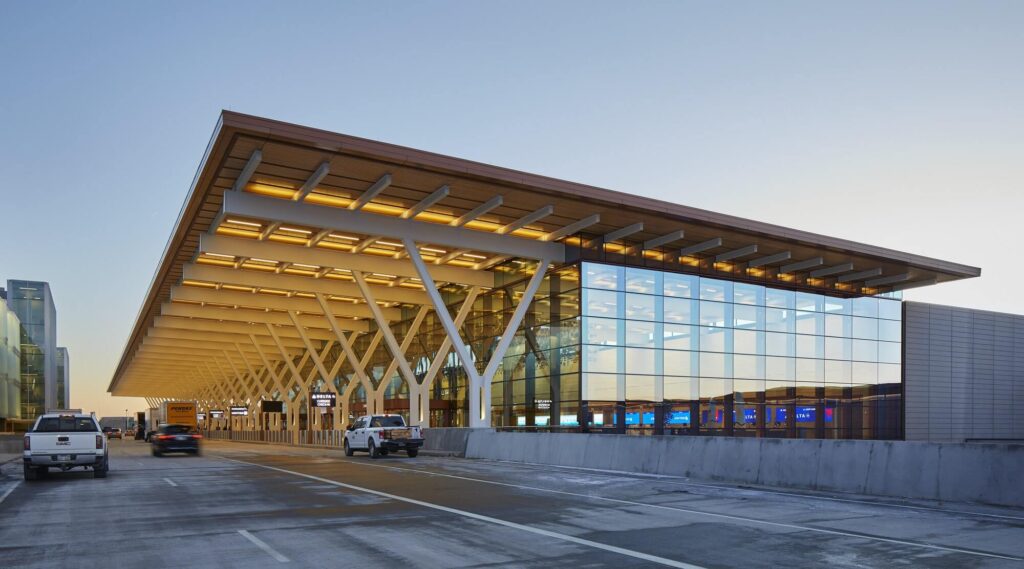
In the case of Fort McMurray, a regional municipality in Wood Buffalo, Alberta, Canada, Cross Laminated Timber (CLT) panels and Glulam beams have provided significant thermal benefits compared to steel.
Designed for cold climates, the three-storey, 50,000-square-metre (or 160,000 square feet) building was one of the first CLT applications in the North American market (2014).
The panels are manufactured to exact dimensions, joints are fitted more tightly, and energy efficiency is improved. Additionally, as CLT panels are solid, airflow through the system is reduced.
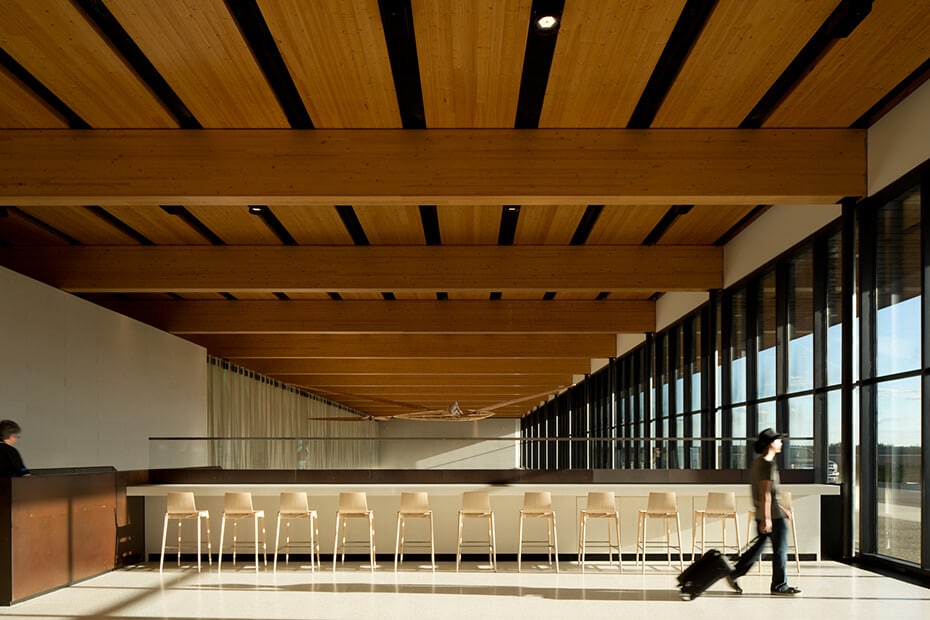
Kelowna International Airport also announced an expansion and upgrade of its terminal last year, using mass timber through British Columbia’s Mass Timber Demonstration Programme.
Colin Basran, Mayor of Kelowna, said, “I’m delighted to see that the terminal expansion will utilise mass timber, showcasing the versatility and design capabilities of B.C. lumber while supporting the local economy. As YLW is the gateway to the Okanagan, the decision to use mass timber is crucial for highlighting the region’s unique characteristics.”
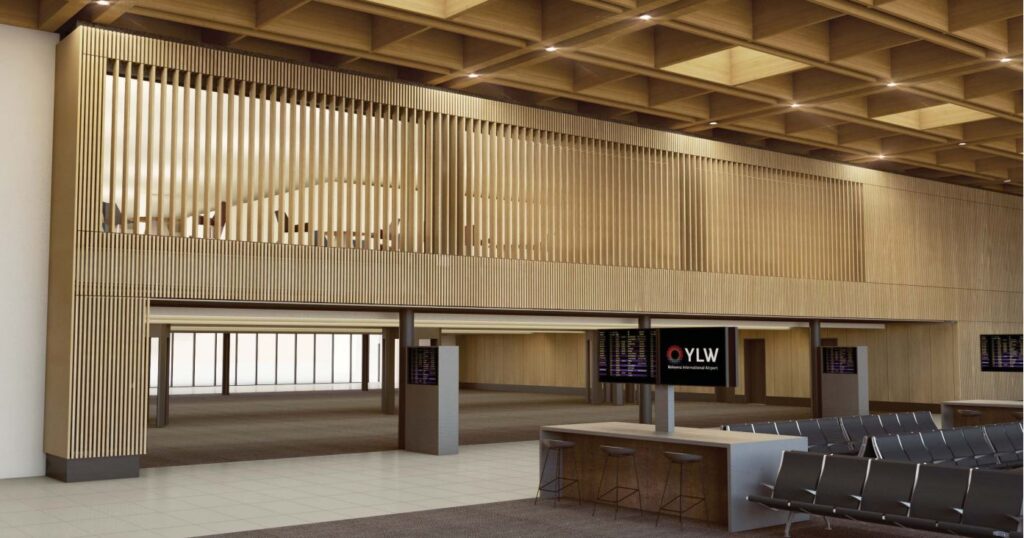
The 8,000 square metres (86,000 square feet) terminal extension will use prefabricated mass timber panels and feature a 4,500 square metre (48,000 square feet) ‘waffle’ system of glulam girders, with CLT panels spanning between the girders, concealing services within the roof. For airport operators, the use of mass timber helps to shorten construction times and reduce construction vehicle traffic.
The successful FAA Design: More Information about PAU’s Designs
New York-based studio PAU has unveiled plans for air traffic control towers to be constructed at airports across the United States, marking the most significant commission since IM Pei’s designs in the early 1960s. The towers are designed to “function beyond their intended design life” and could eventually be deployed at over 100 airports.

This commission signifies the most extensive revamp of the towers since Chinese-American architect Pei received a comparable award in 1962, leading to the construction of 16 towers – all still in use today.
The studio asserts that the designs will “build upon the legacy of IM Pei’s iconic mid-century towers, offering a unique architectural solution that merges aesthetics and functionality for the 21st century.”
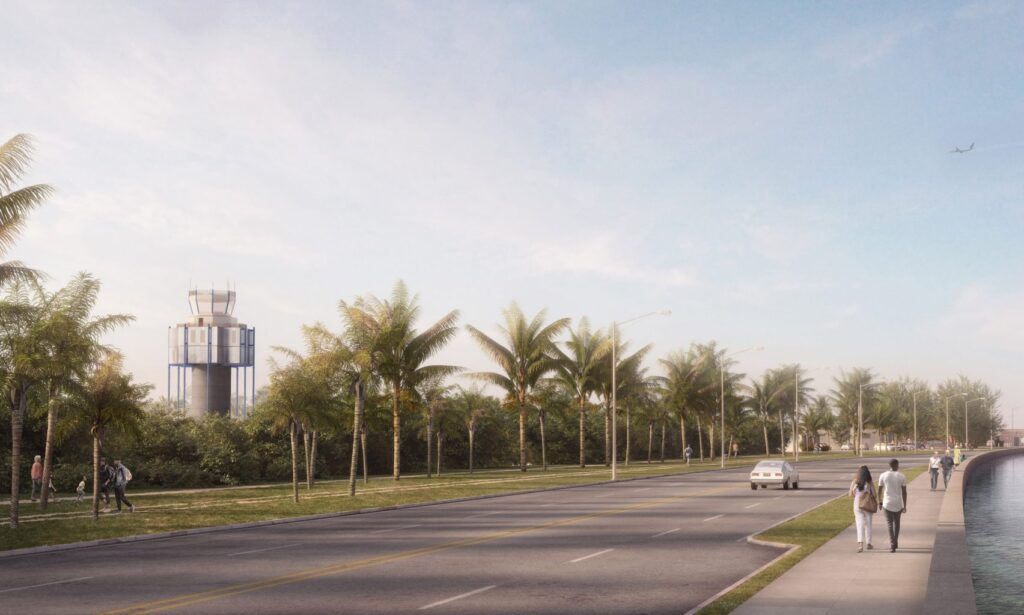
The government’s design brief included a sustainability requirement. PAU confirmed that the designs would use geothermal heating and cooling “where feasible,” incorporating recycled materials, high-performance facades, and an all-electric infrastructure.
To date, Mass Timber has not featured in the initial designs – however, it is expected to feature prominently in the final designs.
“We are grateful and honoured to have the opportunity to design the nation’s next generation of air traffic control towers – a major component of U.S. Transportation Secretary Pete Buttigieg’s plan to achieve net-zero greenhouse gas emissions from the U.S. aviation sector by 2050,” said PAU founding principal Vishaan Chakrabarti, who leads the studio with principal Ruchika Modi.
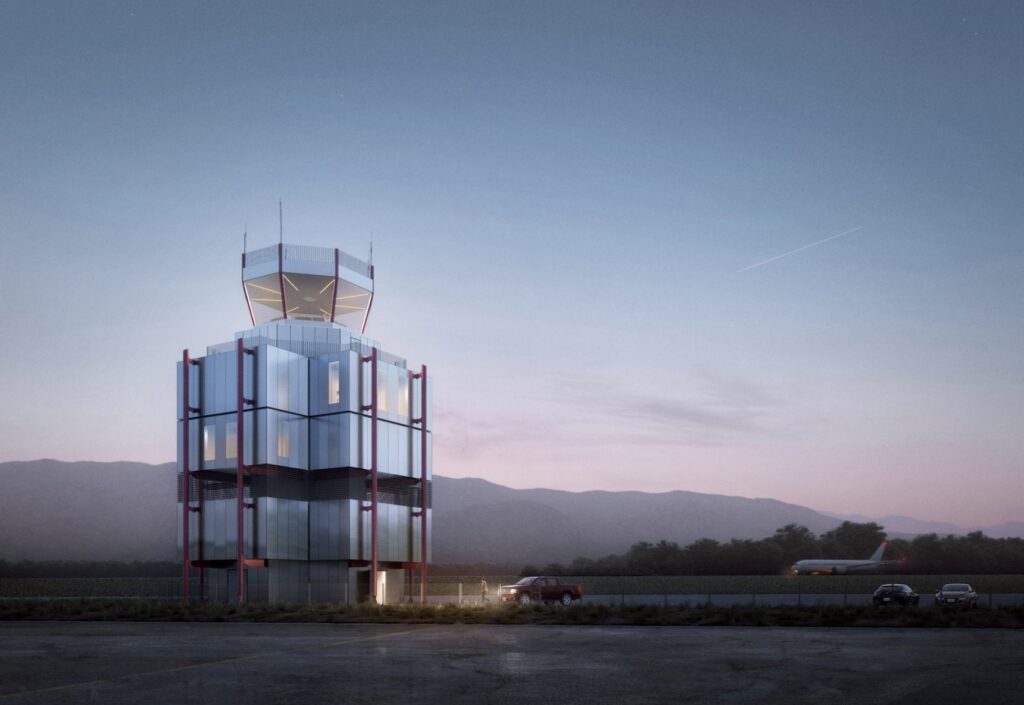
“As a practice that finds great creative possibility within tight constraints, we are thrilled to accept this challenge to create beautiful, functional architecture that serves the needs of air traffic controllers across the country while enhancing safety and reliability for the traveling public,” continued Chakrabarti.
The first ground-break could begin in 2024.
Find more information about the FAA and its sustainability efforts on its sustainability page.






